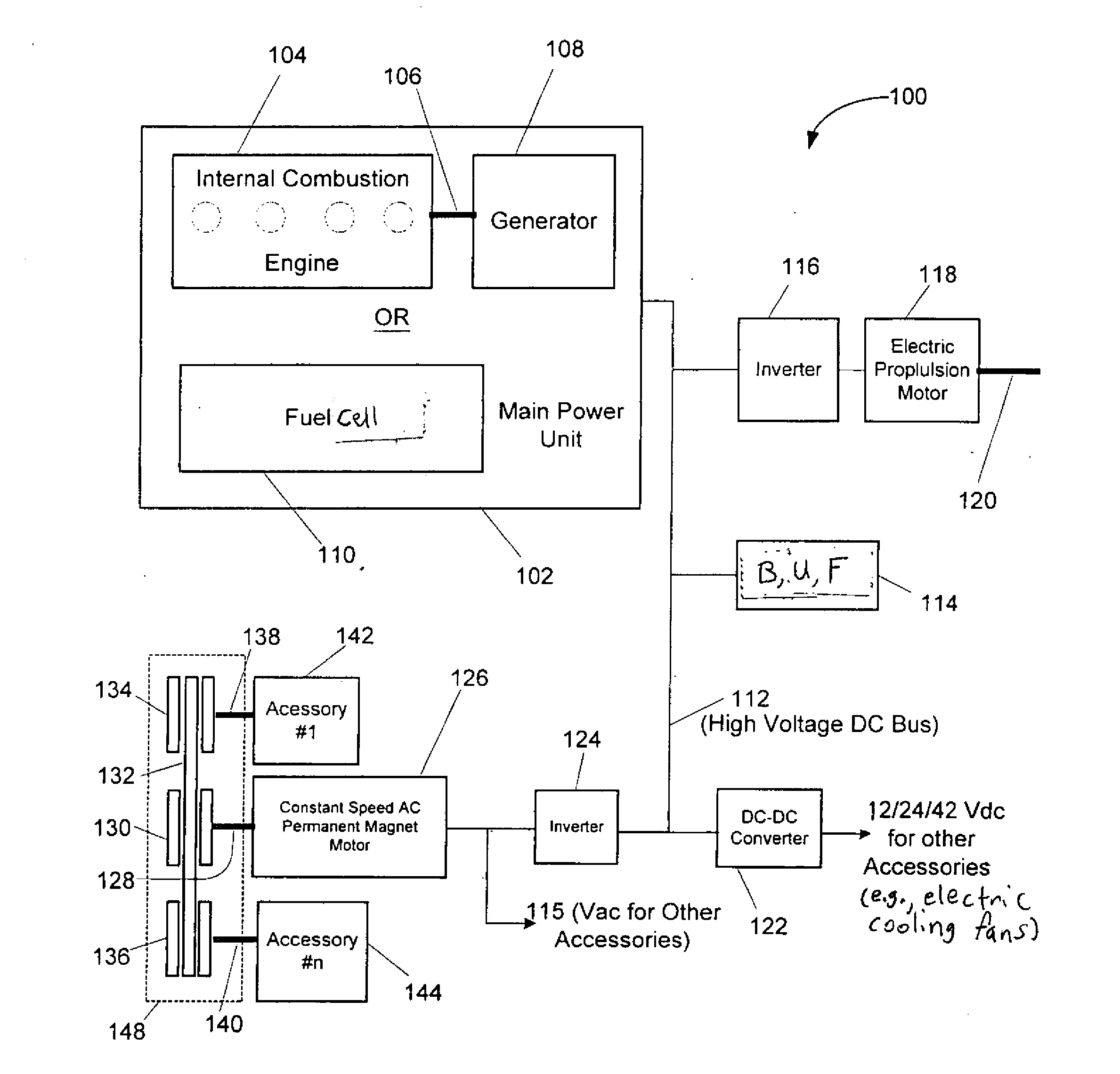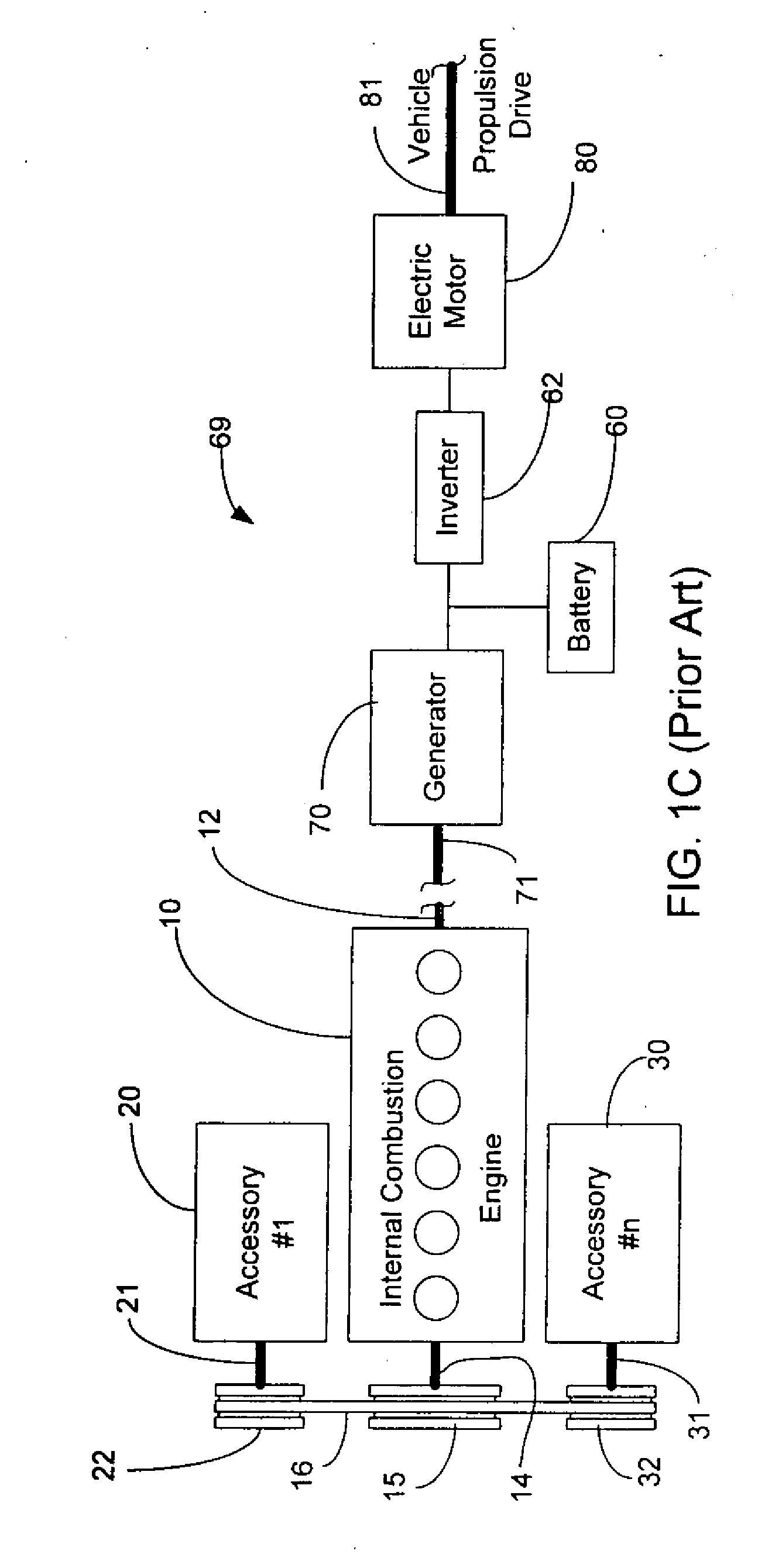System and Method for Powering Accessories in a Hybrid Vehicle
a hybrid vehicle and accessory technology, applied in the direction of battery/fuel cell control arrangement, capacitor propulsion, battery/cell propulsion, etc., can solve the problems of inefficiency introduced into the vehicle, inefficiency introduced in the hybrid vehicle, and inefficiency in the overall cost of the vehicl
- Summary
- Abstract
- Description
- Claims
- Application Information
AI Technical Summary
Benefits of technology
Problems solved by technology
Method used
Image
Examples
Embodiment Construction
[0024] Turning in detail to the drawings, FIGS. 1a-c illustrate systems of driving vehicle accessories as practiced in the prior art. FIG. 1a schematically illustrates a conventional vehicle 9 (e.g., a passenger car, a light truck, a heavy-duty vehicle such as a refuse collection ‘truck or transit bus, or other type of vehicle) having an internal combustion engine 10. The internal combustion engine has two output shafts 12, 14. The first output shaft 12 is coupled to an input shaft 41 of a transmission 40 that may be used to propel the vehicle using a drive shaft 42. Alternatively, the power provided to the transmission 40 may be directed into a transfer case 45 and used to drive a power take-off shaft 46. The power take-off shaft 46 may be used, for example, to drive an additional axle in a four-wheel drive vehicle or to drive a hydraulic pump used in conjunction with heavy-duty equipment such as the lift mechanism in a dump truck or a compactor in a refuse collection truck.
[0025]...
PUM
 Login to View More
Login to View More Abstract
Description
Claims
Application Information
 Login to View More
Login to View More - R&D
- Intellectual Property
- Life Sciences
- Materials
- Tech Scout
- Unparalleled Data Quality
- Higher Quality Content
- 60% Fewer Hallucinations
Browse by: Latest US Patents, China's latest patents, Technical Efficacy Thesaurus, Application Domain, Technology Topic, Popular Technical Reports.
© 2025 PatSnap. All rights reserved.Legal|Privacy policy|Modern Slavery Act Transparency Statement|Sitemap|About US| Contact US: help@patsnap.com



